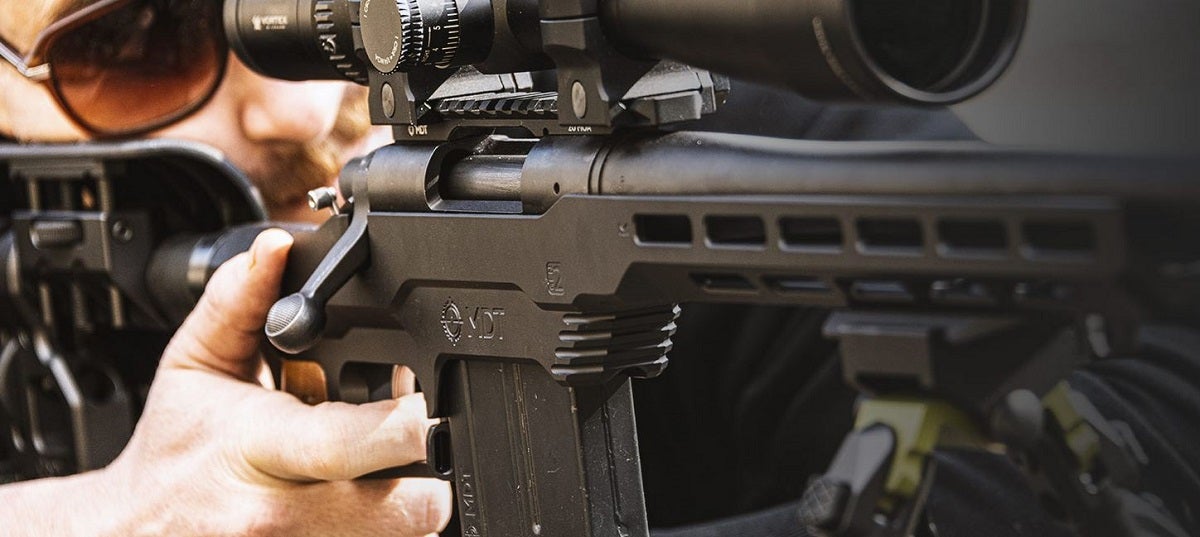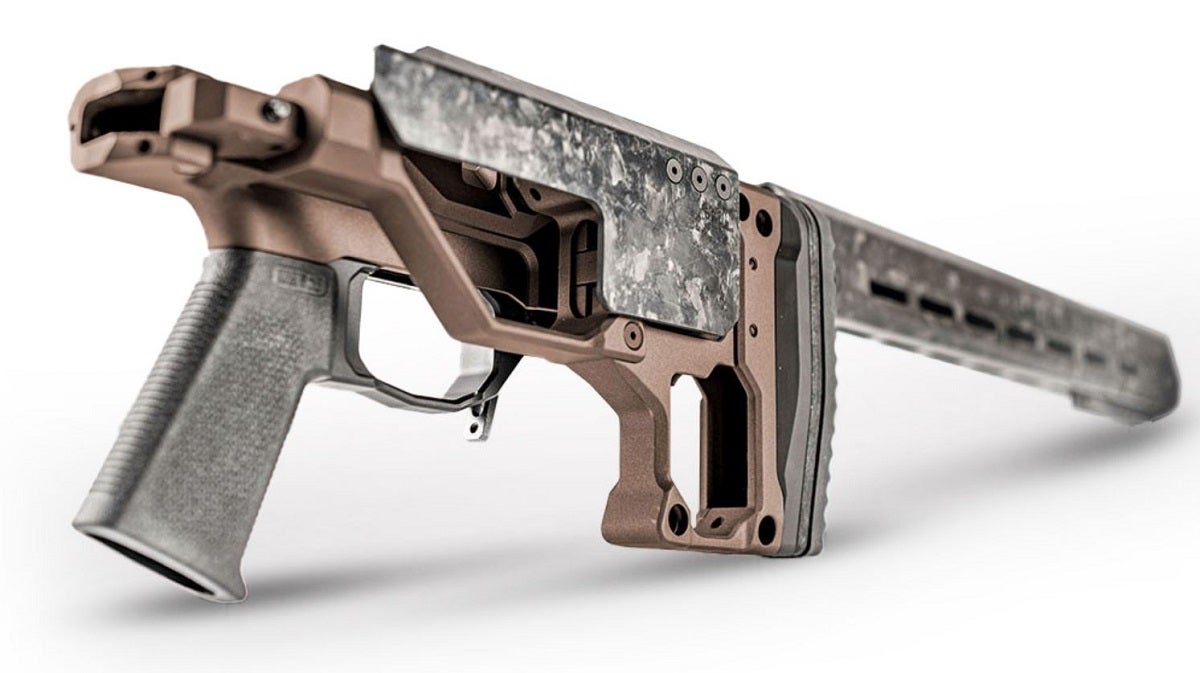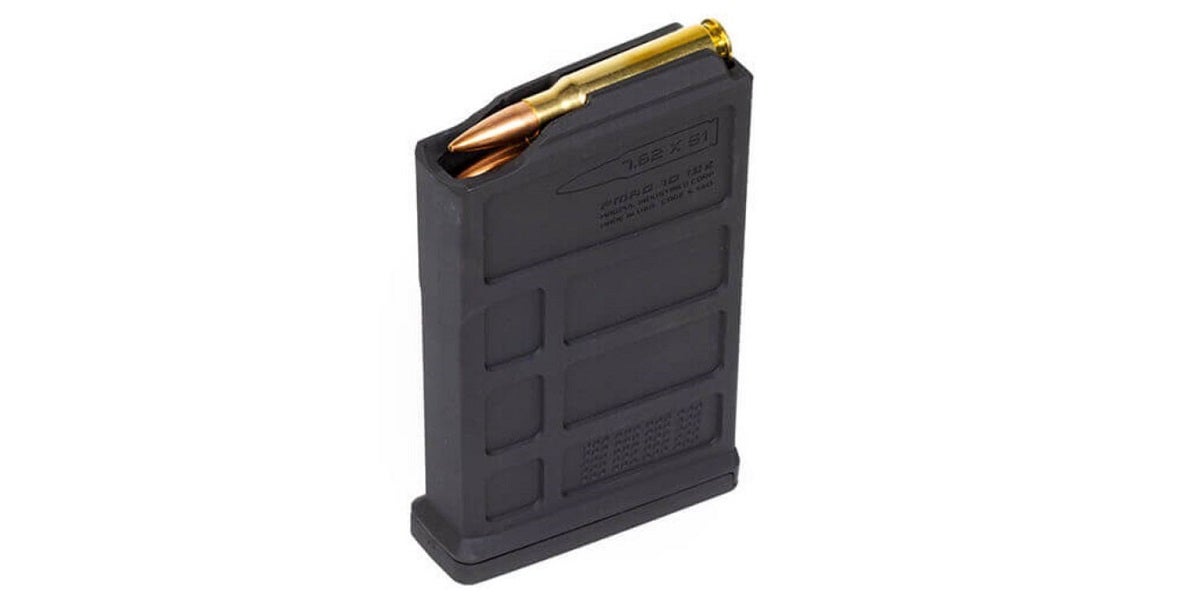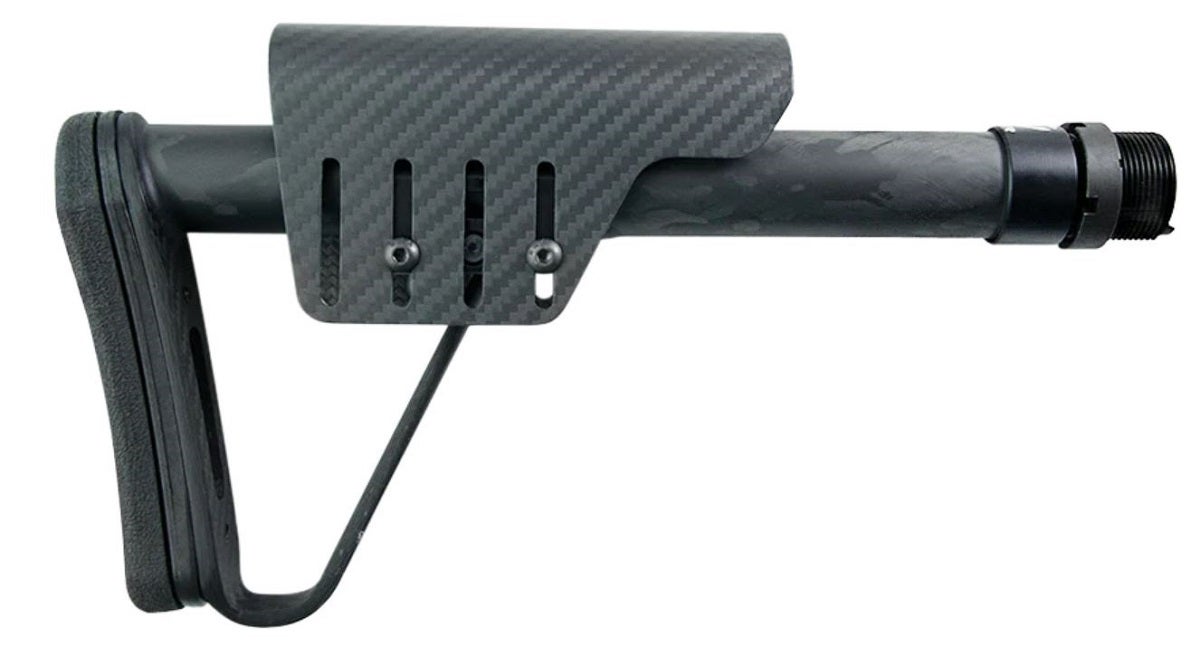What is a Rifle Chassis? Why Bother Installing One?
Travis Olander 12.18.23

There are plenty of ways to accurize a rifle: Install a trigger with less creep and take-up, and a lighter pull. Swap your off-the-shelf barrel for a handcrafted bore with better machining and cleaner rifling. Hand load your own ammo, counting every grain of powder for true consistency. But a rifle chassis is the real key to improving your rifle’s accuracy. A custom chassis also provides better comfort and sight alignment, with an improved length of pull. You’ll also unlock plenty of attachment and rail options for bipods, custom stocks, and other accessories. Plus, a chassis just looks cool. Rolling up to the range with a fully built bolt gun tells everyone around you, “I can ring steel at a kilometer.” But can you, really? Maybe after you buy a chassis. Let’s review.
Rifle Coverage on AllOutdoor
- AllOutdoor Review – The SKB iSeries Single Rifle Case
- NEW Hardcase Rifle and Optics Toolkit from Fix It Sticks
- AO Review: Primary Arms GLx 3-18x44mm Rifle Scope – FFP IR MIL
- NEW Maven S.3 20-40x67mm Spotting & RS1.2 2.5-15×44 FFP Riflescope
What is a Rifle Chassis, anyway?
A rifle chassis – like this LSS XL Gen 2 Chassis from MDT – is a monolithic platform that serves as the foundation upon which your barreled action, trigger, buttstock, and other bits and accessories will rest. The chassis also acts as the interface between you and the target: Your sight picture, cheek weld, trigger finger, supporting posture, and general grip on the rifle are all dictated by the chassis.
Why is a Rifle Chassis important?
Most folks would agree that factory rifle stocks and forends just aren’t that good. They’re designed to economic and universal — two qualities that naturally inhibit accuracy potential. You might find yourself behind the trigger of a new long gun and dealing with sporadic accuracy issues: A flier ruins an otherwise tight group; you’re dealing with eye fatigue while sighting in; you get a cramp in your wrist or pinch your shoulder; you start to notice your zero drifting as things warm up.
While it’s reasonable to look into your ammo and optic, you shouldn’t discount the possibility that your rifle’s factory setup simply isn’t that good. The barrel might be contacting a particular part of the stock, introducing harmonics that kill groupings. Or the length of pull just isn’t quite right, which is making you cramp up and compensate for a poor shooting stance. Even the action and barrel might not be adequately seated in the factory stock, causing it to move when you fire. This isn’t something you’ll always notice when you’re merely handling the gun on the table.
A Rifle Chassis improves Marksmanship Fundamentals
A good rifle chassis allows you to enjoy a truly customized fit, sizing up your rifle to your body. With a chassis, you unlock a plethora of custom stock and grip options, ensuring you’re seated with a comfortable, stable shooting stance that allows for a clear and focused sight picture, a good grip and cheek weld, and better recoil control.
Rifle Chassis are made with “Accurizing” Materials
Pictured: Christensen Arms Modern Precision Rifle Chassis
Most modern factory gun stocks are made from a blend of polymers or good ole’ wood. While these materials are cheap and plentiful, they’re not ideal for squeezing out the most accuracy possible. Custom rifle chassis are made from higher quality composites, carbon fiber, aluminum, or machined alloys that not only reduce weight, but improve recoil mitigation, resist expansion, and lessen action and barrel movement when rounds leave the tube to further tighten up shot groups.
Considerations when picking a Rifle Chassis
Although any chassis constitutes an upgrade over factory stocks, it’s important to consider some key components before you dive all into an expensive, custom setup. Those components include:
Magazine Compatibility
Pictured: PMAG 10-round, 7.62 AICS box magazine, short action
Rifle chassis are made to accept a plethora of magazines, some of which might not be compatible with your rifle’s action or caliber. Most chassis use standard AR-type magazines (5.56/.223, and .308) or Accuracy International, or “AICS,” magazines, which are usually, but not always interchangeable with AR-compatible chassis. Some use completely custom magazines, which means you’ll be limited to only ever using the manufacturer’s boxes – and those bespoke mags tend to come with a premium price tag.
Material and Finish
Pictured: WOOX Furiosa Rimfire Chassis
Aluminum rifle chassis offer the best blend of performance and cost. Aluminum’s lightweight but rugged, and it’s easy to precisely machine, ensuring a perfect fit with your action for good accuracy. But aluminum isn’t the toughest nor the most rigid material. If you’re shooting long-action magnum loads, or you’re just looking for the most performance – and no cost is no object – a forged carbon fiber or titanium chassis is the ticket.
Looks matter, too, so don’t let aesthetics be left out of your decision-making process. Let’s face it, we’ve all stuck an accessory on a rifle at least partly because it looks cool. Some chassis (like the WOOX Furiosa) incorporate hardwood accoutrements atop a machined alloy core. Some chassis also use stainless steel components to improve rigidity and strength where key components – like grips, bipods, and stocks – attach. But this adds cost and weight, too.
Stock Options
Pictured: XLR Industries Ultralight Carbon Fiber AR-Compatible Buttstock
The stock you’ll install on your new chassis is arguably as important as the rest of the entire setup. The stock plays a key role in providing a good sight picture, recoil control, grip, and length of pull.
Some chassis stick with the conventional AR buffer tube, upon which you can install any AR-type buttstock. This opens you up to a plethora of options, as most black rifle owners well know. Other chassis rely on proprietary setups which, like custom box mags, tend to come with higher price tags – though these custom stocks also often provide loads of customization and fitment options, plus the ability to fold for storage.
Rail / Attachment System
Pictured: Accuracy International AX Remington 700 Chassis
Just like any AR handguard, three rail attachment options exist for rifle chassis: KeyMod (shown above), M-LOK (arguably the most popular “new hotness”) and good ole’ Picatinny rails. This writer prefers M-LOK for its lightweight advantage over Pic rails, and because it provides a stronger lock-up with accessories compared to KeyMod. But perhaps your existing accessories will dictate which rail system you opt for. Just don’t forget to make sure it’s compatible with your kit before you pull the trigger on a selection.
Now that you’re learned up on all things related to chassis, check out some of the best options available right now. We reviewed the Daniel Defense Pro Chassis at SHOT Show 2023, and we got to try out the OYRX Chassis for the Remington 700.






